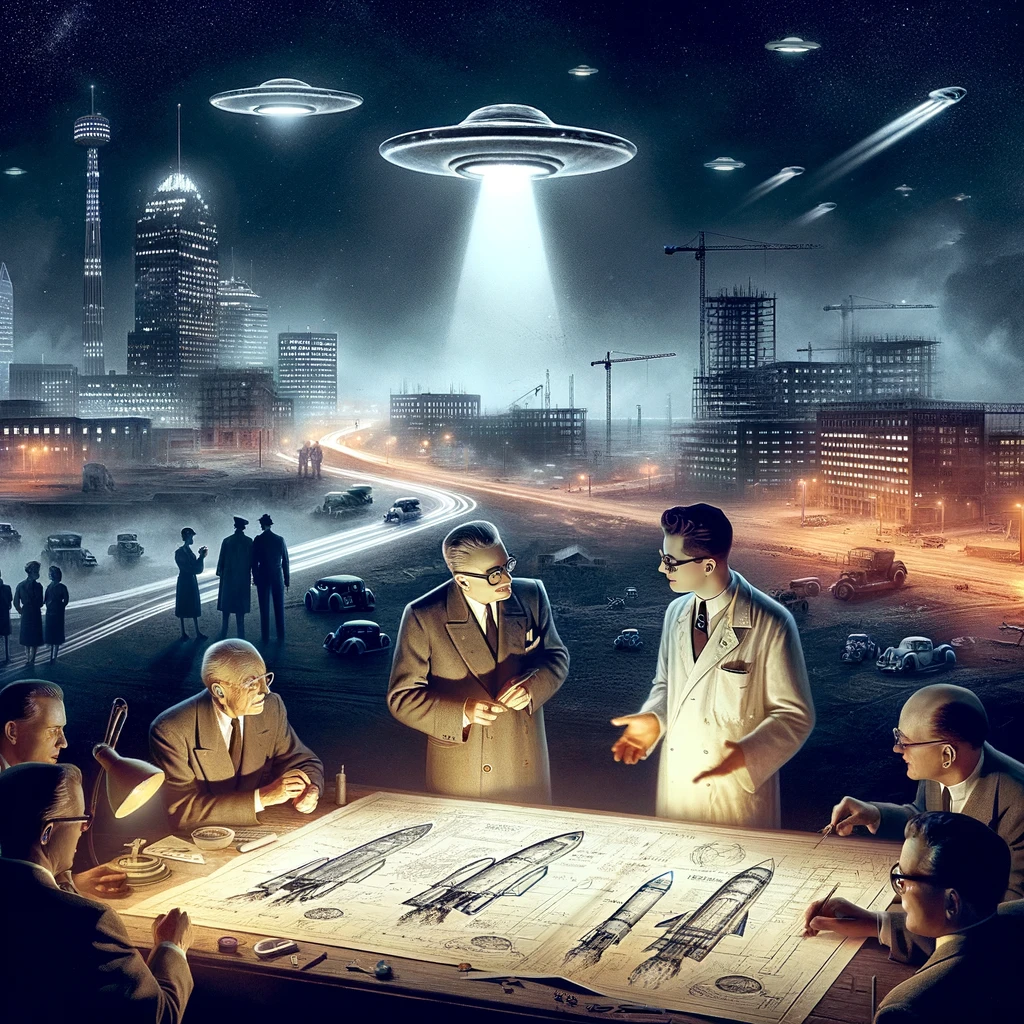We Know We’re Being Monitored by an Alien Intelligence

The documentary “Alabama’s Biggest Secret: Operation Paperclip” sheds light on a lesser-known aspect of Huntsville, Alabama’s past, focusing on the city’s dramatic transformation due to the secretive recruitment of German scientists after World War II. This operation, steeped in historical significance and moral complexity, propelled Huntsville from a relatively small town into a key hub for aerospace, technology, and defense in the United States.
The narrative unfolds through the perspective of the grandson of one of these German scientists, offering an intimate glimpse into the lives and legacies of these individuals. These scientists, who had played crucial roles in the technological advancements of Nazi Germany during the war, found themselves in a new setting in Huntsville, contributing their expertise to the U.S. space program and defense initiatives.
The grandson, named Theo Vowe, provided important clarification regarding the number of German scientists involved in Operation Paperclip. Contrasting with the frequently mentioned figure of 1,600 scientists, engineers, and technicians, Theo explained that the actual foundational team comprised only 125 members, one of whom was his grandfather. The grandson is Theo, and his grandfather’s name was Theodor Vowe.
Theo mentioned that the headquarters of NASA, the Marshall Space Flight Center, is located at Redstone Arsenal in Huntsville. He also highlighted the presence of various intelligence agencies, space weapons systems development, and the Missile Defense Agency on the massive compound, underscoring Huntsville’s significance in aerospace and defense sectors. The Redstone Arsenal in Huntsville, Alabama, spans a significant area, it covers approximately 38,000 acres, not 29,000 as mentioned in the video.
This recounting highlights the dual nature of the scientists’ contributions: their knowledge was invaluable to the United States during a time of intense technological rivalry and Cold War pressures, yet their past affiliations with Nazi Germany cast a shadow over their achievements, complicating their legacy. This complexity is echoed in the sentiments of Huntsville’s inhabitants and the descendants of these scientists, who navigate a heritage filled with both pride and discomfort.
Theodor Vowe, as part of the group of German scientists brought to the U.S. under Operation Paperclip, worked alongside Wernher von Braun in the development of rockets and space exploration technologies.
Wernher von Braun emerges as a central figure in the American space program within the narrative, often hailed as the “Father of American Rocketry.” His complex history is acknowledged, particularly his high-ranking SS position during World War II and his pivotal role in the V-2 rocket program. Despite these wartime actions, von Braun and fellow Operation Paperclip scientists seemingly faced minimal repercussions upon their arrival in the United States. Instead, von Braun’s post-war contributions to space exploration, notably his leadership in developing the Saturn space program, are emphasized, painting him as a key architect of American space achievements.
“Das Marsprojekt,” a book written by Wernher von Braun, outlines his vision for a manned mission to Mars. Theo, the grandson of Theodor Vowe, highlights this work as a significant piece of literature that showcases von Braun’s early ideas on space exploration beyond Earth.
Theo Vowe suggests that Wernher von Braun was taken to the Roswell crash site, implying his involvement in the incident associated with UFOs. Wernher von Braun reportedly said, “We know we’re being monitored by an alien intelligence.” This knowledge was known and discussed among German scientists.
The documentary examines Huntsville’s evolution, especially in light of Theo Vowe’s insights into Wernher von Braun’s Roswell incident involvement and alien intelligence discussions among German scientists. “Alabama’s Biggest Secret: Operation Paperclip” scrutinizes the confluence of history, ethics, and speculative science, urging a critical assessment of scientific milestones amidst ethical dilemmas and theories of extraterrestrial monitoring.


